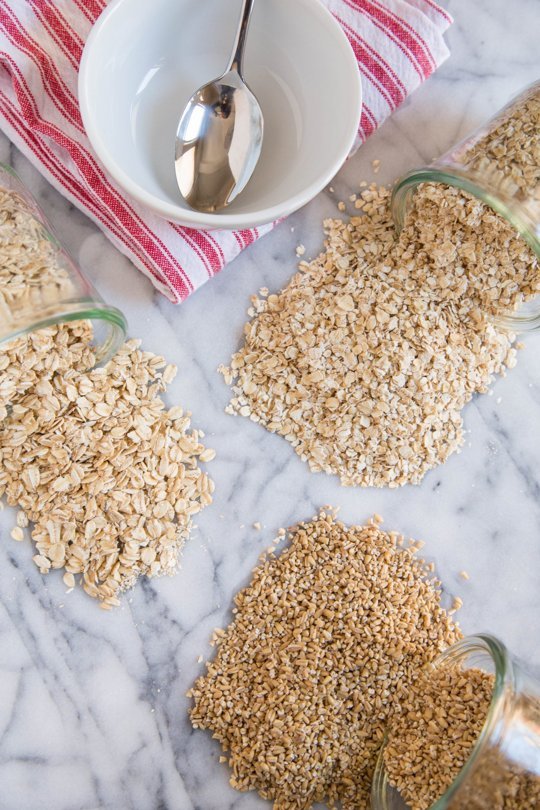With the increasing popularity of overnight oats and oatmeal cookies, healthy oatmeal is becoming more and more of a favorite at the breakfast table and throughout the rest of the day. Beyond the traditional hot and satisfying bowl of oatmeal at breakfast, oats now show up in pancakes, muffins, cookies, granola bars and much more.
Sometimes the recipes just call for rolled oats, but what about using steel-cut oats or instant oats?
All oats start off as oat groats — the whole, unbroken grains. Before being processed into any other variety of oat, groats are usually roasted at a very low temperature. This not only gives the oats their nice toasty flavor, but the heat also inactivates the enzyme that causes oats to go rancid, making them more shelf-stable.
All of the oatmeal variations provide the same healthy nutrients since they’re all made from whole oat groats. So what’s the difference??
The Difference Between Steel-Cut, Rolled, & Instant Oats
The difference between steel-cut, rolled, and instant oats is simply how much the oat groat has been processed. This also results in each variety having a distinct texture and varying cook times.
Here’s what you should know about steel-cut oats:
Steel-Cut Oats
Also referred to as Irish or Scottish oats, this variety is made when the whole groat is cut into several pieces, rather than rolled. Steel-cut oats look almost like rice that’s been cut into pieces. This variety takes the longest to cook, and has a toothsome, chewy texture that retains much of its shape even after cooking.
In addition to being used for porridge, steel-cut oats can also be used to make meatloaf and savory congee (a nice alternative to rice), or add texture to stuffing.
Because of its toothsome texture, rolled or instant oats don’t make a good substitute for steel-cut oats.
Rolled Oats
Also called old-fashioned or whole oats, rolled oats look like flat, irregularly round, slightly textured discs. When processed, the whole grains of oats are first steamed to make them soft and pliable, then pressed to flatten them.
Rolled oats cook faster than steel-cut oats, absorb more liquid, and hold their shape relatively well during cooking. In addition to be heated for a warm breakfast bowl, rolled oats are commonly used in granola bars, cookies, muffins, and other baked goods.
Instant oats can be used in place of rolled oats, although the cook time will be much less, and the final dish will not have as much texture.
Learn about instant oats on the next page …

